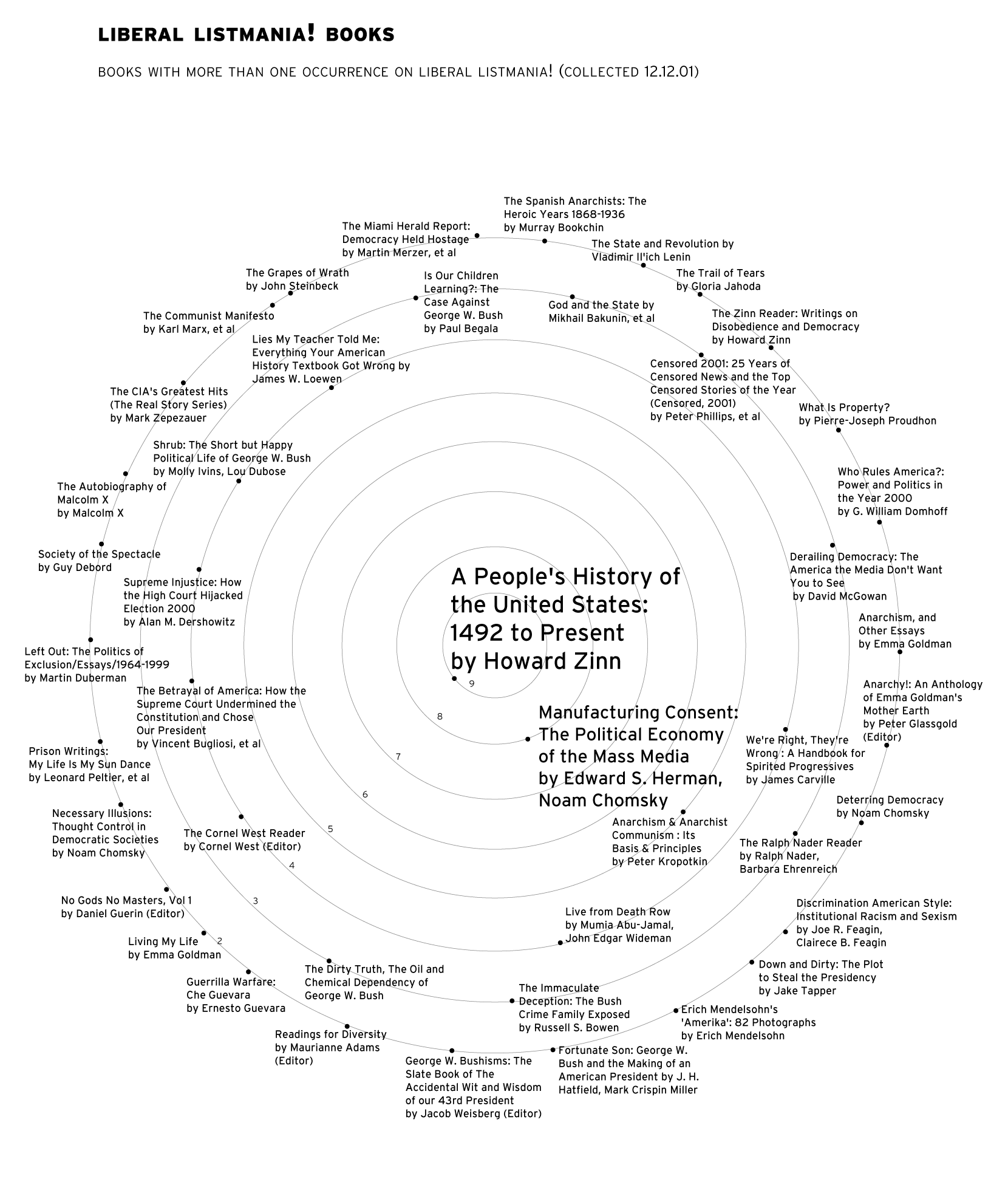book / data mining the amazon
title
Data Mining the Amazon
published
2003
dimensions
52 pages, 2 fold-out charts
23 x 14.5 cm.
paperback, offset printed, perfect bound
Edition: 500
Design
Angie Waller and Alex Ching
download
pdf web version︎︎︎
purchase
Printed Matter︎︎︎
Data Mining the Amazon analyzes Amazon.com’s recommendation algorithm to determine if political polarity is present in music taste.
title
Data Mining the Amazon
published
2003
dimensions
52 pages, 2 fold-out charts
23 x 14.5 cm.
paperback, offset printed, perfect bound
Edition: 500
Design
Angie Waller and Alex Ching
download
pdf web version︎︎︎
purchase
Printed Matter︎︎︎

The use of barcodes in commercial outlets, the computerization of business transactions, and the rise of e-businesses have resulted in a significant amount of data being available to consumers and corporations. Companies have been analyzing this data for years to extract information and enhance sales. This process, known as data mining, is the focus of this book. The Amazon mentioned here refers to Amazon.com, who pioneered collecting troves of customer data to fuel one of the earliest recommendation algorithms.


"Data Mining the Amazon" compares the music recommendations on Amazon.com for political conservatives and liberals. This is done by analyzing CD recommendations for books that were read by these groups. The selection of books for analysis was based on their inclusion in user-generated reading lists called "Listmania!," which are now deprecated. The political leaning of the list creator was described in the title of the selected lists.

In the past, when people purchased books on Amazon, each book would have a list of frequently purchased CDs displayed alongside it. These albums, labeled as "People who bought this book also bought these CDs," were analyzed to create network diagrams representing different political leanings. The goal was to identify variations in taste.

Inspired by the aesthetics of annual reports, this book includes additional charts and graphics that showcase niche reading lists and purchase behaviors for different corporations and organizations. Amazon determined these lists and behaviors based on the Internet Protocol (IP) address, which is the numerical label of the computer network, of the purchaser.
Although many of the features described in the book are no longer available on Amazon, "Data Mining the Amazon" serves as a snapshot of the company's extensive data collection and profiling.
Although many of the features described in the book are no longer available on Amazon, "Data Mining the Amazon" serves as a snapshot of the company's extensive data collection and profiling.
Related work: